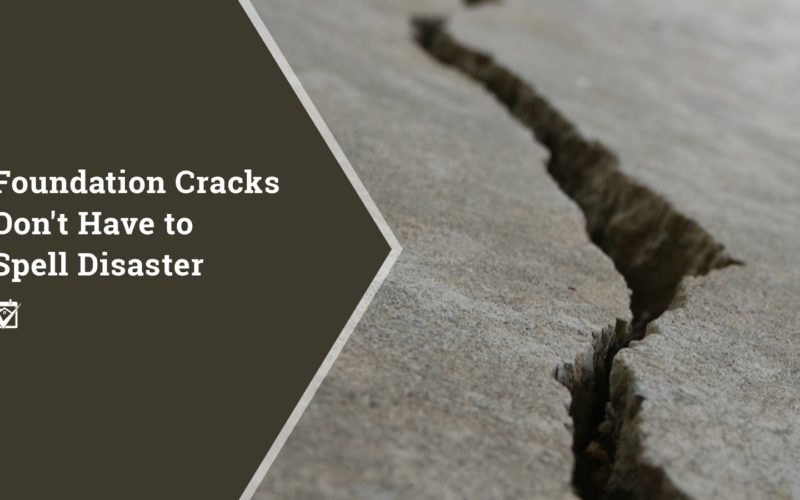Cracks in the foundation of your house can be signs of a problem. However, this doesn’t mean that you should automatically worry if you see a few small cracks. Most foundations do have cracks and there are a few perfectly normal reasons why cracks appear in foundations. It’s important to look into the issue if you notice cracks – but hold off on assuming the worst until you determine whether there’s a problem worth worrying about.
What Causes Foundation Cracks?
Cracks can simply be caused by the settling of your home over time or soil expansion if your home is built on land with some clay in the soil. Other potential causes of foundation cracks include:
- Drainage issues around the home
- Insufficient reinforcement to support the weight of the house
- Major home renovations or add-ons such as adding a second story
- Tree roots under the soil
- Earthquakes, sinkholes or landslides that have affected the area
- Deep soil freezing during the winter
As you can see, there are a lot of potential reasons why cracks might appear in your foundation and this is not an all-inclusive list! Despite the wide range of possible causes, it’s important to not get ahead of yourself and worry over the cracks until you’ve figured out whether they actually indicate a serious problem.
Examining Foundation Cracks
When you first notice cracks in your foundation, get a good look at them and where they appear. Taking photos will help since they’ll give you an easy-to-access reference later on. If possible, include an object of known size in the pictures to give you a sense of scale; ruler, coins, ink pens or other common objects are easy to use in this regard.
When looking at the cracks in your foundation, take note of the direction of the crack, how wide the crack is and whether it has a uniform width. If there is an obvious point of origin (such as a crack that starts at the corner of a basement window or foundation vent) then you should take note of this as well. If you have a crawlspace or basement under your home, go in and examine the foundation wall from the other side to see if the crack is visible there was well. The more information you have about the crack, the easier it will be to determine whether there’s a problem.
Is the Crack a Problem?
Small, thin cracks in the foundation usually are not much to be concerned about, in fact they are very common. Cracks typically form as the house and the soil beneath it settle into place. Likewise, small cracks that appear after a particularly harsh winter shouldn’t be a major concern since they are easy to seal before the next bout of cold weather comes around.
However there are some cracks that you need to watch out for. Horizontal cracks, straight vertical cracks and cracks that are wider at one end than the other or simply get wider are all signs of potential problems. These can indicate that the foundation is cracking due to a much larger problem than just a little settling or bad weather. Check the depth of the crack, especially if you have a crawlspace or basement; a crack that goes all the way through the foundation wall can be bad. You should also see if there are multiple cracks forming around the same area or if any of the cracked areas correspond with cracks or other issues inside the house.
If the cracks seem recent, clean up the area and place marks on the wall beside the cracks. This will let you look for new debris or changes to the crack length or width over the next several days. Large cracks or cracks that seem to still be growing need to be repaired before they can cause significant issues.
If you have these more troublesome cracks, you will want to consult with your general contractor or a foundation specialist. There are easy, but not necessarily cheap, remedies to repairing larger foundation cracks.

Jerry Jensen
Jensen Property Management & Leasing
(435) 628-1678
